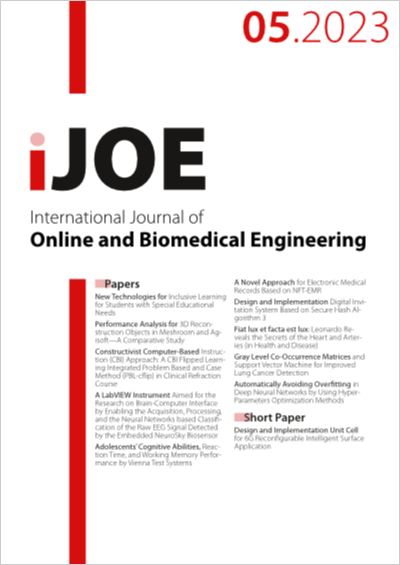New Technologies for Inclusive Learning for Students with Special Educational Needs
DOI:
https://doi.org/10.3991/ijoe.v19i05.36417Keywords:
inclusion / e-inclusion, new technologies, , students with special educational needs, sustainable learning and development ecosystemAbstract
In recent years, in the context of the educational reform, dominant position is held by the social demand for the inclusion of all students in the regular classroom and the request to redesign the educational process to align with the individualized needs of students. Τhe concept of inclusion, which view the heterogeneity in the light of social justice and equality, refers not simply to the placement of the SEN students in the mainstream school, but basically, to their dynamic engagement in every aspect of the educational process and in the social interactions that flow from it. “E-inclusive” pedagogy refers to teachers’ decisions to providing their students innovative ways of learning and alternative means of completing their tasks, by incorporating the technology in the educational activities. The aim of this paper is to propose tech tools and e-services for the accessibility and active participation of students with special educational needs in teaching and learning procedures of the ordinary classroom and examine the role of teachers in realizing their inclusion / e-inclusion, as the main facilitators and modulators of the classroom settings to an open learning and development ecosystem. The results showed that teachers who provide authentic opportunities for interaction and learning for all their students and incorporate, flexibly, new technologies into their teaching strategies to meet their unique needs, contribute significantly to their acquisition of academic but mainly functional life skills, preparing them for substantial employment and integration opportunities in community life.
Downloads
Published
How to Cite
Issue
Section
License
Copyright (c) 2023 Eleni Karagianni, Athanasios Drigas

This work is licensed under a Creative Commons Attribution 4.0 International License.



